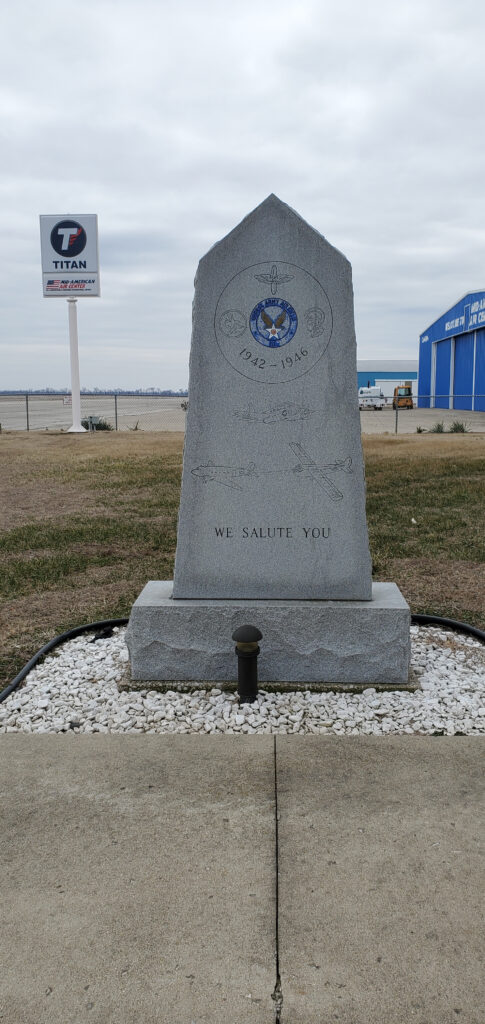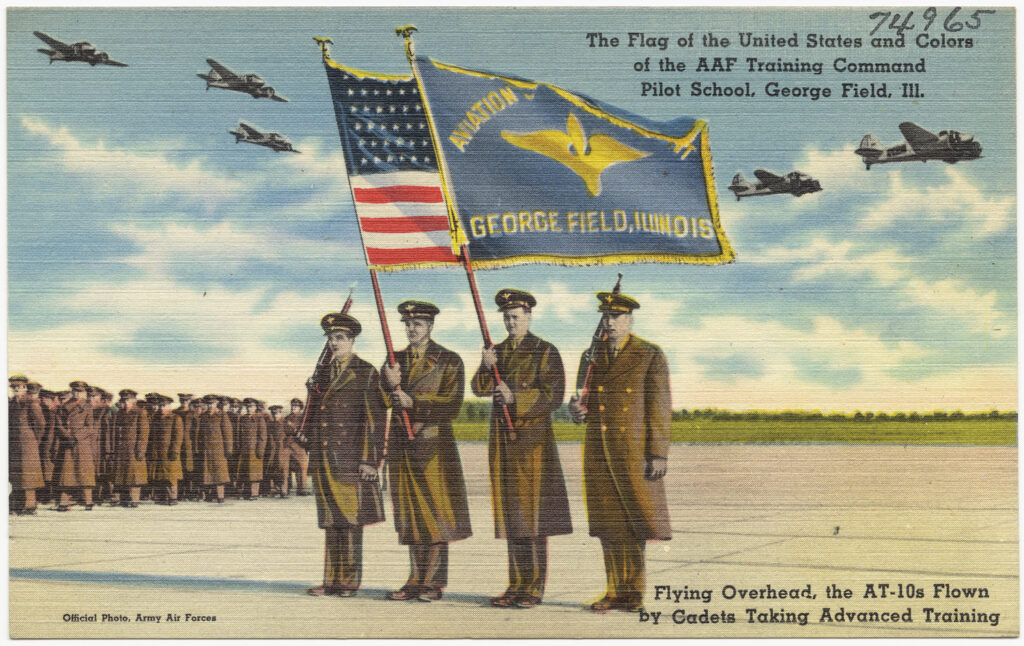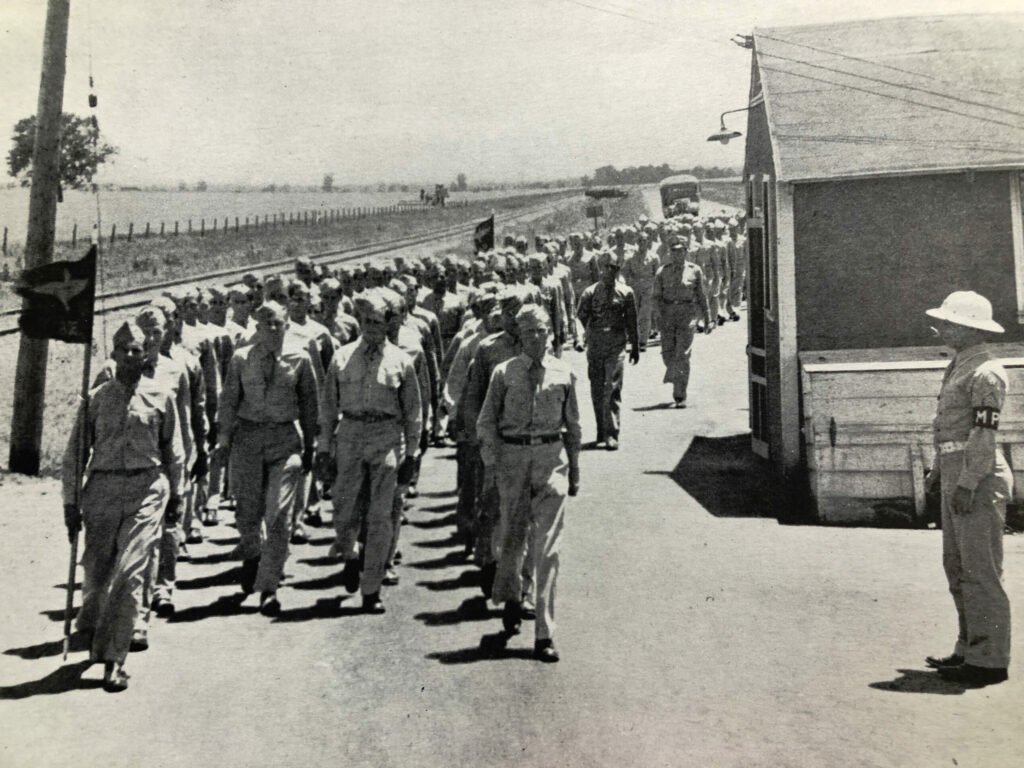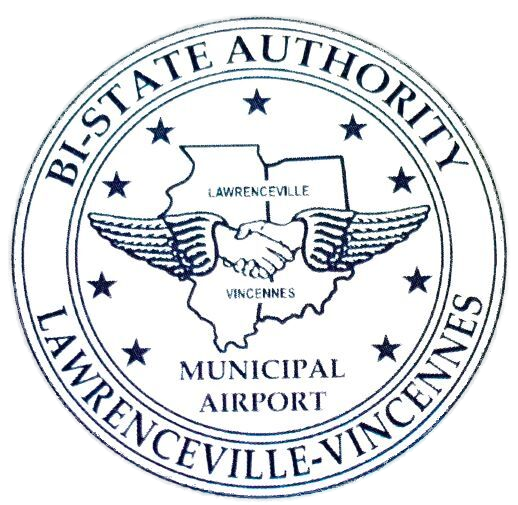Our History
We have a deep history with the area




Mid-American Air Center
Middle of Everywhere
It’s easy to find our airport, roughly on a line from St. Louis to Cincinnati just west of the Wabash River. Mid-American Air Center is just a short flight or drive from everywhere, such as St. Louis (140 miles), Springfield (150), Chicago (265), Indianapolis (135), Cincinnati (190), Terre Haute (60) and Evansville (65).
Training Ground
During World War II, George Field served as an advanced flight training school for U.S. Army Air Corps. Pilots trained in twin-engine aircraft, primarily preparing to fly medium bombers or troop transports. In the later years of the war, pilots were trained for paratrooper drops and towing gliders. Opened in August of 1942, the field last served as a training ground for pilots until 1945. It was conveyed to the city of Lawrenceville in 1948 to establish a municipal airport.
Small town feel, big city airport
We’re in located in a quiet spot, but Mid-American Air Center has the long, wide runways to handle jet aircraft and trained personnel to fuel your aircraft. Mid-American Air Center prides itself on working with two-seaters up to commercial jet traffic. For business travelers, catering is available through our partners. For smaller groups, Mid-American Air Center has a fleet of courtesy cars.
Our History over time
A few months after the bombing of Pearl Harbor pulled the United States into World War II, Uncle Sam came to Lawrence County looking for a spot to build an Army Air Corps base. Early in 1942, Army personnel inspected property on the Allison Prairie between Lawrenceville and the Wabash River and became interested in over 3,000 acres for the flat terrain and variable weather patterns which afford the variety of flying conditions to train and prepare pilots for combat. The official selection was finalized on April 16, 1942 and publicly announced the next day.
On August 10, 1942
On August 10, 1942, Col. George W. Mundy took control of George Field. The name of the field was a matter of much interest. The training school was first referred to as “Lawrence Army Flying School” by Congressman Laurence Arnold. Shortly after Mundy took control of the field, he released this statement: “The airfield five miles east of Lawrenceville, Illinois is designated George Field in honor of the late General Harold H. George.’’
Dedicated on Oct. 18, 1942, George Field was home to advanced training of pilots flying the twin-engine Beech AT-10, plus training in the C-47 and the CG-4A glider to carry paratroopers. Personnel also trained to become mechanics. In completion of training at George Field, the flying cadets were commissions second Lieutenants or Flight Officers. Thousands of graduates moved on to the war effort, likely in all theaters, after two intense months of training at George Field. The mission of the Eastern Flying Command expressed in its famed motto – Prepare for Combat – was fulfilled in each class of cadets.
The base included living quarters for officers, cadets and WACs, hospital, mess hall, clubs for officers and non-commissioned, theater, ground school training, gymnasium, bowling alley, restaurant and soda fountain, administrative main hall and civilian housing. On April 13, 1943, the Chicago Cubs and Detroit Tigers played an exhibition game in front of 4,000 fans, despite cold weather. The Tigers won 6-4. In may of 1943, the first WACs arrived. A month later, George Field faced off against Mother Nature.
Following 17 consecutive days of rain, the Wabash and Embarrass rivers busted levees and flooded Allison Prairie, sending farm families for high ground. Roads to George Field were underwater. Engineers feverishly built temporary levees around the base, just as the water lapped to the hospital. Tons of supplies were flown from Stout and Chanute fields, and The Battle of George Field was won after four days of fighting the rushing waters. The waters didn’t fully recede until June, 1943. Two months later, 25,000 people visited George Field during an open house to celebrate the base’s one-year anniversary. Pictures show newly commissioned officers take their oath at Adams Coliseum in nearby Vincennes, Ind., and Illinois Gov. Dwight Green made two appearances to George Field within 10 days in late 1943.
1944
In 1944, George Field personnel fought Mississippi River flooding and camped at Southern Illinois University in Carbondale. The Cubs and White Sox held an exhibition at Geroge Field, although a dust storm cut the game short. By May, Lawrenceville and Vincennes newspapers carried headlines of George Field going on standby by the middle of the summer. The last class of pilots graduated on Aug 4, 1944. Upon the final days of the base, it was said, “Those who are dead need no sympathy, for they have inscribed their glory upon the scrolls of time, while those living are still writing their glory across the skies.’’
George Field would shut down by 1946. The land was leased to area farmers. The City of Lawrenceville applied to the War Assets Administration to acquire George Field. An application signed by Mayor Stoy Fox resulted in the “transfer of George Field to the City of Lawrenceville, Illinois, as per application, and acceptance of this was dated May 2, 1948.’’ The deed was acquired by the City of Lawrenceville on November 16, 1948 and was called Lawrenceville Municipal Airport. The lease money from the land was used by Lawrenceville to maintain the Airport, a practice still presently used.
1964
By June 14, 1964, negotiations created a locally operation known as the Bi-State Authority. This Bi-State Authority is the only one in the United States composed of a committee across state lines operating a common facility. The Lawrenceville Municipal Airport was given a new name after June 14, 1964 and was called the Lawrenceville-Vincennes Municipal Airport. On February 20, 1980, the name was changed again, this time to Mid-American Air Center with a secondary name of Lawrenceville-Vincennes International Airport. It is still controlled by the Bi-State Authority. The previous housing was torn down when no longer needed and industry has been sought over the years to make this facility a small industrial park. A Foreign Trade Zone makes it an international airport.
The airport is actively used by general aviation aircraft and as a training area by Mid-American Pilot Association in its pilot training and hosting events, such as fly-ins. t one time several commuter services were offered, but no longer available. The Bi-State Authority and Mid-American Air Center staff work diligently to create a long-term plan for the facility’s use and growth.
